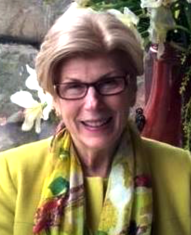Carol Oseran Starin
God created people because God loves stories—Elie Wiesel, The Gates of the Forest
 Jonathan Safran Foer wrote that Jews have 6 senses, the usual 5 plus one more—memory. (Everything Is Illuminated).
Jonathan Safran Foer wrote that Jews have 6 senses, the usual 5 plus one more—memory. (Everything Is Illuminated).
At this time of year when Jews throughout the world prepare for Pesah we tend to remember the sedarim of our past.
I’ll never forget the seders of my childhood at Nanny and Gramps’ apartment in Seattle’s Fremont neighborhood. Approaching the building we could see that all four floors of windows were steamy. The minute we opened the lobby door, the smell of gefilte fish smacked us in the face. It stunk up the lobby. It surrounded us in the elevator.
Their apartment door was always open. We could hear people talking before when we stepped off the elevator. There were a couple dozen people there—more people than could comfortably fit in that apartment. When everyone was seated there was no way to move.
I didn’t know most of those people. Mom would say, “Oh, that one with the long neck is Nanny’s cousin Esther. She never married.” “And that’s Nanny’s cousin Nettie and that’s Nanny’s cousin Della. I never talked to them. They never talked to me. Old ladies. Really old.
For 30 years, with thanks to Arthur Kurzweil’s 1982 talk at CAJE and his book, From Generation to Generation, in which he wrote “don’t stop searching til you reach Sinai,” I have been researching the history of our family and searching for family stories. And now that I am older than those old ladies at Nanny’s seder, I realize that all my family stories were seated at her table. If only I could talk to all those cousins.
And now, decades later, I work with Jewish teachers and speak in their classrooms because every Jewish class, family program, camp and youth group is involved in some aspect of learning their family stories.
Kurzweil wrote, “We have a past and a history and we can discover it if we want to.” The reality is that we all have stories. Our interest may begin with a family tree. But once we ask, “Where did Nanny come from” we’re into searching for the stories.
Finding the stories has become so much more than a hobby, so much more than names and dates, death certificates and marriage licenses and census records. Mike Karsen, noted genealogist, writes,
“While a birth certificate proves someone was born, telling their life stories proves that someone lived.”
Here are five places to begin—five places to begin learning your own story, your students’ stories, your synagogue’s story. (Why is it named Temple de Hirsch and who was Baron Maurice de Hirsch?)
- Begin with your name. Our names tell stories. What are the stories your name tells? Who were you named for? Do you have a Hebrew or Yiddish name? My Yiddish name is Sura Leah, the name of one of my great grandmother’s sisters. She never came to this country and she didn’t have any children. I was given her name so it would be as if I am her child.For Jews names are very important. We are called to the Torah by our names—linked to our parents. And, for some, our headstones will link us to our parents. Back in the day if a child became ill, the parents changed his name so the Angel of Death wouldn’t find him.
- Talk with the oldest person in your family. They have fascinating stories to tell. Who was the first person in your family to come to this country? Friday night we will read, “My father was a wandering Aramean.” Who was the Jacob in your family? There are always strangers at my seder, so I begin by asking each person to tell about the wandering Aramean in their family.
- Check census records, vital records, passenger manifests, World War I Draft registrations, petitions for Naturalization. The internet is our best friend. Go to Ancestry.com (they have a free trial period) and FamilySearch or JewishGen (both free). Your life will be forever changed.
- Find all those old photos that someone doesn’t know what to do with. They are gold. Pictures tell stories. But sometimes you really need to work hard to figure out who’s in the photo and what story is being told.
- Join me in Seattle on August 7th.
 This summer the International Association of Jewish Genealogical Societies (IAJGS) 36th annual conference, for the first time, will be held in Seattle. And, for the first time, there is a track for teachers, an Educators’ Forum, for we all teach Jewish history and Jewish stories.
This summer the International Association of Jewish Genealogical Societies (IAJGS) 36th annual conference, for the first time, will be held in Seattle. And, for the first time, there is a track for teachers, an Educators’ Forum, for we all teach Jewish history and Jewish stories.
If you are personally interested in learning more about Jewish genealogy, consider a trip to Seattle. If you are a teacher or know a teacher that would like to spend one remarkable day, take a look at the Educator Forum.
The special pricing for the August 7th Educator Forum is made possible by generous grants from The Covenant Foundation and The Samis Foundation. Click Genealogy for Educators.
A people’s memory is history; and as a person without a memory, so a people without a history cannot grow wiser, better.—I.L. Peretz
Blessed is the person that remembers what is forgotten!—S.Y. Agnon

